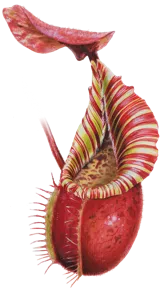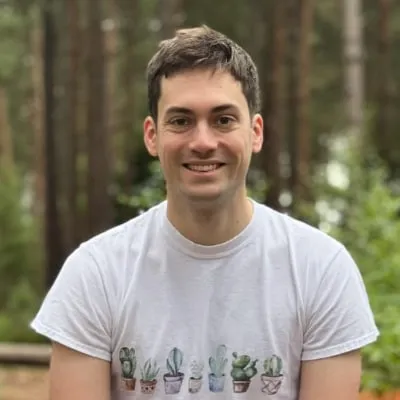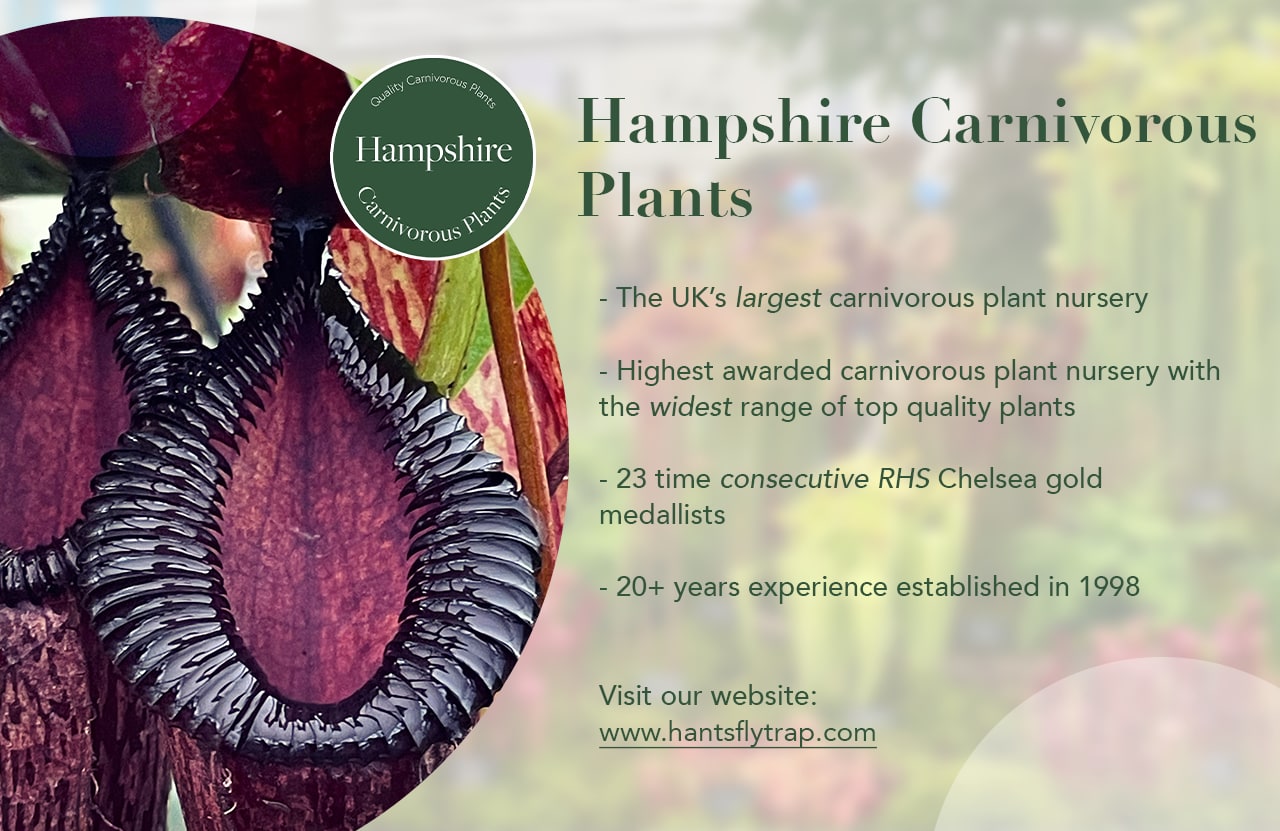Nepenthes mollis
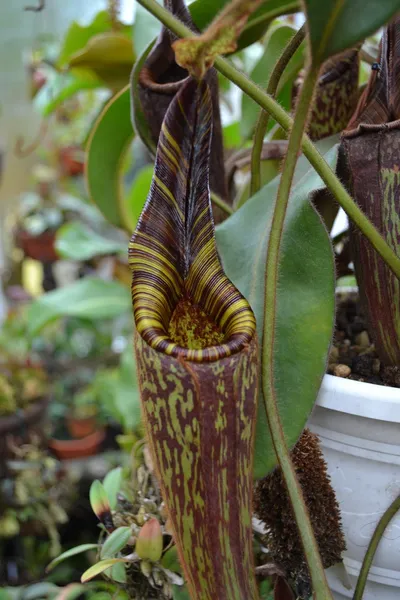 A large N. mollis grown by Chris Klein.
A large N. mollis grown by Chris Klein. 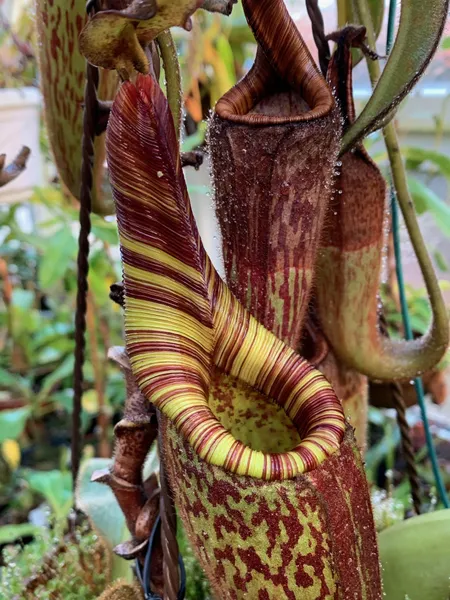 Another pitcher on Chris Klein's N. mollis. Look at the height of the neck!
Another pitcher on Chris Klein's N. mollis. Look at the height of the neck! 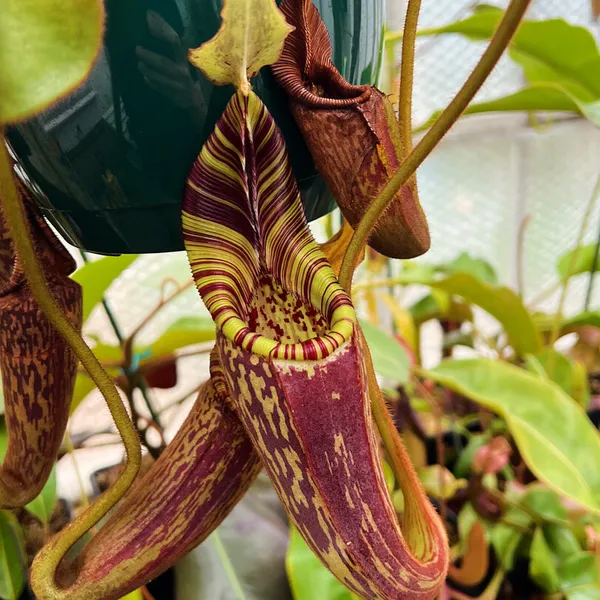 If you look closely the peristome is also ribbed.
If you look closely the peristome is also ribbed. 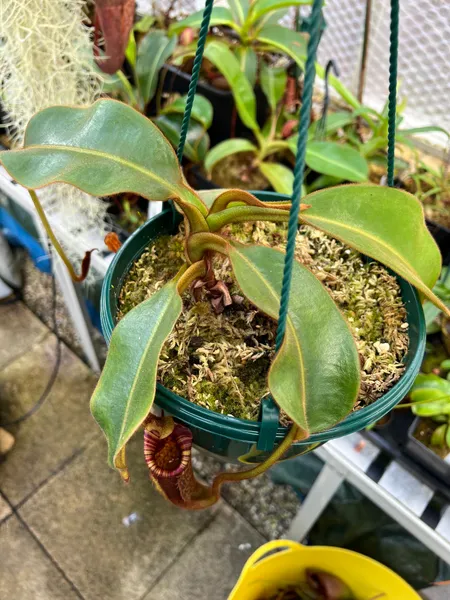 My larger N. mollis from AW. Even the leaves are hairy.
My larger N. mollis from AW. Even the leaves are hairy. 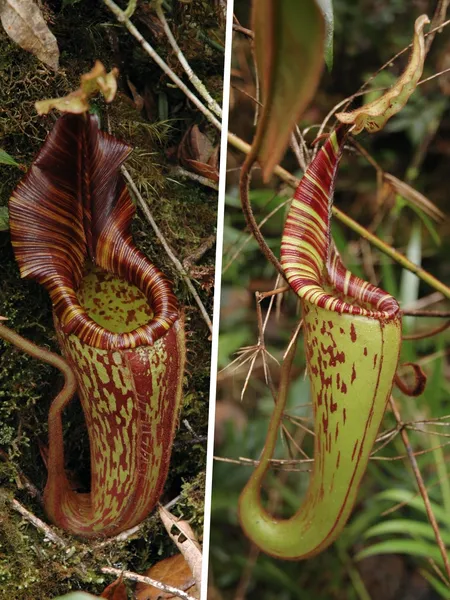 N. mollis lower and upper pitchers, in-situ on Mt Murud, photographed by Jeremiah Harris
N. mollis lower and upper pitchers, in-situ on Mt Murud, photographed by Jeremiah Harris 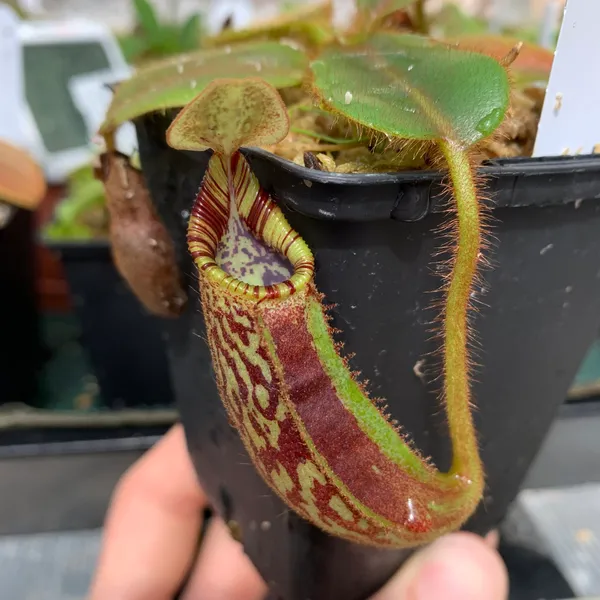 Small N. mollis from BE - very pretty even when young.
Small N. mollis from BE - very pretty even when young. 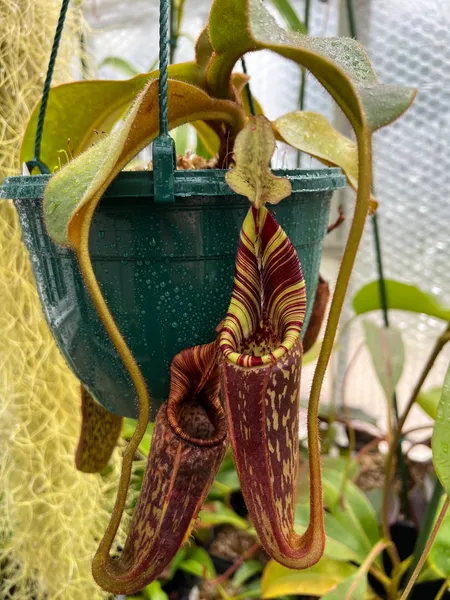 The distinctive tall peristome of N. mollis, striped yellow and brown.
The distinctive tall peristome of N. mollis, striped yellow and brown. Description & Care
Nepenthes mollis is a beautiful species from Borneo with an interesting scientific history. It was first collected in 1925 on Mount Kemul, by Dutch botanist Frederik Endert. The specimen he collected for the herbarium did not have any pitchers, which meant it wasn’t immediately clear what N. mollis was!
Botanists didn’t revisit the site on Mount Kemul for almost a century. In the intervening years, dozens of other Nepenthes species were discovered and named. This included N. hurrelliana in 2003, a stunning species found growing as an epiphyte in forests throughout Kalimantan, Sarawak, and Sabah. It wasn’t until 2019 that an expedition to Mount Kemul rediscovered Endert’s original plants, and found them to be N. hurrelliana. For this reason, the old name - N. mollis - sticks.
N. mollis is famous for its pitchers - both its cylindrical lowers and funnel-shaped uppers exhibit a very tall, extended neck. The unusual peristome is beautifully coloured with yellow and brown stripes. Both pitchers and leaves are very hairy, covered with a rusty brown indumentum. Many botanists suspect that N. mollis originated as a hybrid between N. veitchii and N. fusca, a theory I find fascinating.
I grow 3 forms of N. mollis. First (and largest), a clone from Wistuba - this plant did not come with location data, but it’s a lovely plant and an easy grower. Second, the recent Borneo Exotics release (BE-3921) - it’s slower but still very attractive. Finally I have the famous BCP clone from Mount Murud. It’s still small but is already stunning. Like N. singalana, this is a species which is very attractive even when small.
N. mollis is not a difficult species to grow as long as highland conditions are provided, but it is slow, particularly when small. I suspect this is why it’s so rare in cultivation despite being in tissue culture by several large nurseries. It’s worth the wait, however - pitchers on mature plants are truly a sight to behold.
How I Grow It
| Media | Coarse with lots of aggregate - I use long fibre sphagnum moss, perlite, kanuma, and orchid bark (2:1:1:1) |
| Water | Damp but not wet. |
| Light | Very bright, diffused light. |
| Fertiliser | Maxsea or liquid orchid feed in the pitchers, every two weeks. |
| Temperatures | 12°C (54°F) minimum year-round, with summer highs of ~ 30°C (86°F). |
| Humidity | 70% during the day, rising to over 90% at night. |
Learn more about cultivation with my guide to growing Nepenthes.
Day & Night Temperatures
Nepenthes mollis is a highland species, found at elevations of between 1300 and 2400 meters. This range is highlighted in orange above, and equates to temperatures of approximately 20 - 29°C during the day, and 10 - 19°C at night.
Habitat
| Native to | Borneo |
| IUCN Red List status | Least Concern |
| Natural hybrids | N. lowii, N. veitchii |
Buying N. mollis
| Availability | Species is in tissue culture, so it can be found for sale. But N. mollis is seldom available in larger sizes. |
| Borneo Exotics codes |
|
| Recommended nursery | California Carnivores Hampshire Carnivorous Plants |
